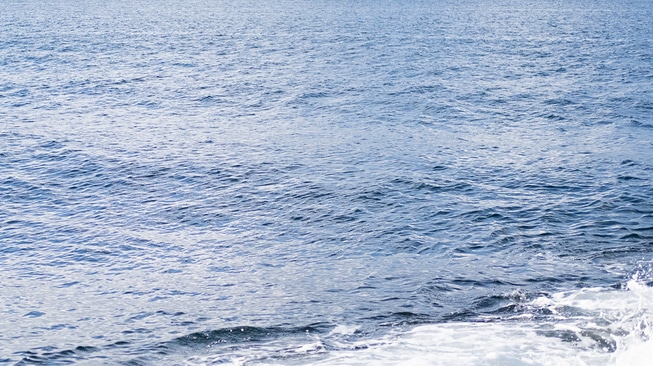I’m thinking about the corals in Samlafjord
The Hardanger fjord, as we currently know it, was carved out when large glaciers retreated inland over 10,000 years ago. Since then, life in the fjord has adapted itself to the sea floor conditions, water quality, and nutrient supply.

Researchers at Havforskingsinstituttet (the Norwegian Institute of Marine Research) suggest there are good reasons to believe that the corals have lived in the fjord nearly from the start. From areas further out in the fjord where more detailed mapping has been done, the coral reefs have been described as “hanging gardens” which thrive on the steep walls of the fjord, down to over 600 meters below the surface. These coral colonies are vulnerable ecosystems which also serve as crucial nurseries for young fish. Perhaps these coral reefs are one of the reasons that, among others, halibut and blue whiting – which are on the red list – have established permanent breeding grounds in the Samlafjord. We know all too little about these important dependencies and interactions between life in the fjord. The coral reefs in particular are poorly documented, but corals have been spotted at both Kvamsøy and Mælen during targeted surveys in conjunction with aquaculture applications for Lingalaks and Eide. Several of the coral species that were identified currently are – or could soon be – on the red list for extremely vulnerable corals.
2000 truckloads of waste per year in Kvam and Ullensvang
The Havforskingsinstituttet shows in their report titled “Hengende korallhager i kandidatområde for marint vern i ytre Hardangerfjord” (Hanging coral gardens in candidate areas for marine protection in the outer Hardangerfjord) that runoff and waste from aquaculture and other pollution are the largest dangers for the corals – and therefore the life in the fjord which depends on them.
The coral organism lives within a limestone shell that is anchored to the bottom, and cannot move when pollution and sludge approaches. The sludge from a fish farm can spread at least 1 kilometer from the source, and so the waste from a single farm can cover an area upwards of 30,000 acres. A fish farm which produces 3,000 tonnes of fish releases roughly 1,500 tonnes of waste and uneaten fish feed each year. Converted to 10-tonne truckloads, this equates to 150 truckloads of sludge and runoff per year. Based on the production capacity stated in the two farming applications for Samlafjord referenced earlier, this means an output of nearly a truckload of nutrient-rich waste would be produced each day.
With regard to the total fish production in Varaldsøy, in Kvam and Ullensvang municipalities, 40,000 tonnes yearly thus yields over 2,000 truckloads of waste each year.
Currently, there are no regulations that the aquaculture industry must clean up after itself. When an area has been destroyed and rendered unusable, a company can simply apply for relocation, and the marine pollution just moves to a new area. An example of this is Lingalaks’ application to relocate to Tveitnes, outside Ålvik.
Pollution as a resource
The most important nutrients in fish feed and fish waste are nitrogen, phosphorous, and organic matter. In the calculations from Havforskingsinstitutet, the production of 40,000 tonnes of farmed fish would lead to the release of 20,000 tonnes of waste (fish excrement, excess / uneaten fish food, and similar). Additionally there is the waste from the fish hatchery itself, likely around 2,000 tonnes. But this waste is also a nutrient-rich resource. In the waste production figures above, the waste would likely contain about 2,000 tonnes of nitrogen, 440 tonnes of phosphorous, and nearly 5,000 tonnes of organic matter. These projections utilise the same conversion figures which the Miljødirektoratet (the Norwegian Environmental Agency) used at a seminar in Florø in 2020 titled “Oppdrett av postsmolt, 70 – 1000 gram“ (Fish farming of post-smolt, 70 – 1000 grams). Naturvernforbundet would like to emphasise that these are approximate and uncertain figures. We agree with Miljødirektoratet, which writes that further knowledge in this area is needed: “A shared and common understanding of emission quantities must be created, with better documentation and a more solid knowledge base.”
This pollution is thus a resource that we must take care of. It can, for example, be used for production of biogas, fertilisers, and similar. This production and further processing can also provide jobs.
Regardless of this, the waste emissions from fish farming today are so large that the creation of new areas for aquaculture should not be under consideration. The fish farming industry must clean up after itself so that the corals and rest of the life in the fjord have a safe livelihood and sustainable future.